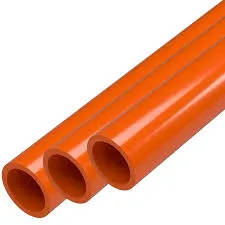Nov . 19, 2024 16:06 Back to list
HDPE Pipe Size Chart and Manufacturer Guide for Optimal Selection
Understanding HDPE Pipe Size Charts and Manufacturer Considerations
High-Density Polyethylene (HDPE) pipes are widely used in various industries due to their excellent resistance to corrosion, chemicals, and UV radiation. One of the critical aspects of using HDPE pipes is understanding the different sizes and specifications that manufacturers provide. This article explores HDPE pipe size charts, key factors to consider when selecting a manufacturer, and tips for ensuring the best use of HDPE pipes in your projects.
What is HDPE?
HDPE is a thermoplastic polymer made from petroleum. Its molecular structure gives it high tensile strength and makes it an ideal choice for applications requiring durable piping solutions. HDPE pipes are commonly used for water supply, sewage systems, gas distribution, and more due to their robust and flexible nature.
Importance of HDPE Pipe Size Charts
HDPE pipe size charts are vital tools that help engineers, contractors, and procurement professionals select the appropriate pipe dimensions for their specific applications. These charts typically outline the pipe's outer diameter (OD), inner diameter (ID), wall thickness, and various pressure ratings.
1. Outer Diameter (OD) The outer diameter is crucial for compatibility with fittings and joining methods. Knowing the OD helps determine how the pipe will fit within existing systems and ensure a proper seal. 2. Inner Diameter (ID) The inner diameter is significant for flow calculations. When designing systems such as water supply or drainage, it’s essential to know the ID to predict the flow rates accurately.
3. Wall Thickness Wall thickness affects the pressure rating of the pipe. Thicker walls generally allow the pipe to withstand higher pressures, which is vital in applications where pressure fluctuations are expected.
4. Pressure Ratings HDPE pipes come with different pressure ratings, which indicate the maximum allowable pressure under which the pipe can operate. Understanding these ratings is essential for ensuring system reliability and safety.
Factors to Consider When Choosing a Manufacturer
When selecting an HDPE pipe manufacturer, several factors should influence your decision
1. Quality Assurance Ensure that the manufacturer adheres to industry standards and certifications. Look for certifications such as ASTM, ISO, and AWWA, which indicate that the products meet rigorous quality control measures.
hdpe pipe size chart manufacturer

2. Material Specifications Verify that the manufacturer uses high-quality HDPE raw materials. The grading of HDPE (like PE80 or PE100) will impact the pipe's strength and longevity.
3. Range of Sizes A manufacturer with a broad range of sizes can offer more flexibility for different projects. Having options for custom sizing can also be beneficial for unique application demands.
4. Technical Support Choose a manufacturer that provides strong customer support and technical guidance. This support can help you navigate any challenges in choosing the right pipes and fittings for your project.
5. Reputation and Experience Research the manufacturer’s reputation in the industry. Established manufacturers with a proven track record tend to offer reliable products and services.
Best Practices for Using HDPE Pipes
To maximize the benefits of HDPE pipes, consider these best practices
1. Proper Installation Follow manufacturer guidelines and industry standards for installation. Proper techniques ensure the integrity of the piping system and extend its lifespan.
2. Regular Maintenance Although HDPE is resistant to corrosion, regular inspections and maintenance will help identify potential issues before they become significant problems.
3. Documentation Keep thorough records of the pipe specifications and installation procedures. This documentation is crucial for future upgrades or repairs.
4. Education and Training Ensure that all personnel involved in the handling and installation of HDPE pipes are adequately trained. Understanding the material properties and proper procedures is essential for successful project outcomes.
Conclusion
HDPE pipes are an integral part of many infrastructure projects, and understanding the sizing and specifications provided by manufacturers is crucial for optimal performance. By utilizing HDPE pipe size charts, selecting the right manufacturer, and following best practices for installation and maintenance, you can ensure that your piping systems are reliable and effective for years to come.
-
High-Quality PVC Borehole Pipes Durable & Versatile Pipe Solutions
NewsJul.08,2025
-
High-Quality PVC Perforated Pipes for Efficient Drainage Leading Manufacturers & Factories
NewsJul.08,2025
-
High-Quality PVC Borehole Pipes Durable Pipe Solutions by Leading Manufacturer
NewsJul.08,2025
-
High-Quality PVC Borehole Pipes Reliable PVC Pipe Manufacturer Solutions
NewsJul.07,2025
-
High-Quality UPVC Drain Pipes Durable HDPE & Drain Pipe Solutions
NewsJul.07,2025
-
High-Quality Conduit Pipes & HDPE Conduit Fittings Manufacturer Reliable Factory Supply
NewsJul.06,2025

